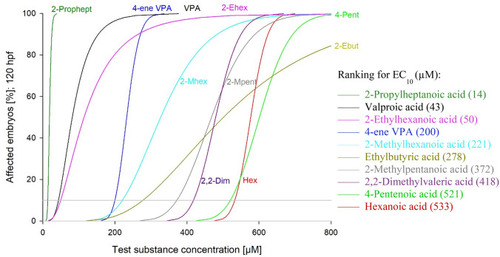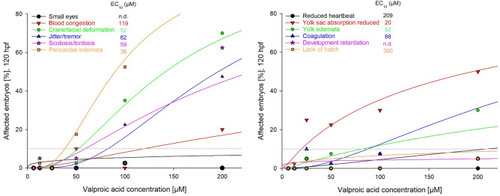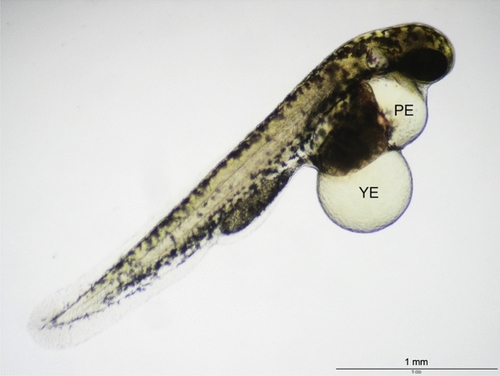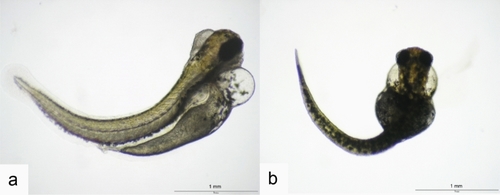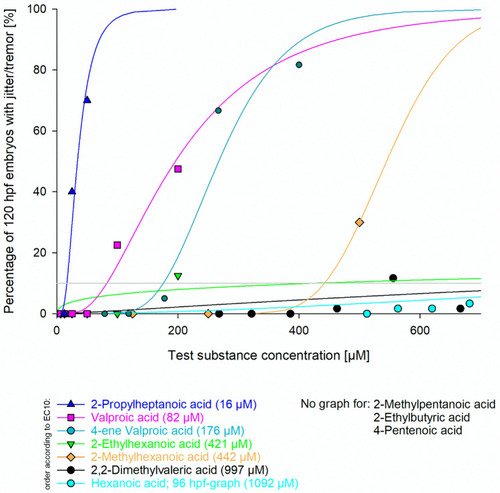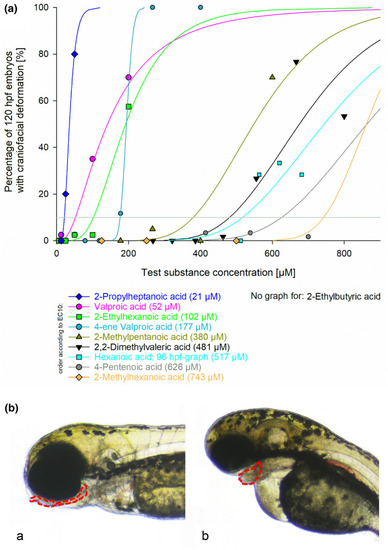- Title
-
Neurotoxic effects in zebrafish embryos by valproic acid and nine of its analogues: the fish-mouse connection?
- Authors
- Brotzmann, K., Wolterbeek, A., Kroese, D., Braunbeck, T.
- Source
- Full text @ Arch. Toxicol.
|
Cumulated portion (% of individuals) of zebrafish ( |
|
Concentration–response curves and EC10 values for specific sublethal endpoints recorded after 120 h exposure of zebrafish ( |
|
Pericardial edema (PE) and yolk edema (YE) as common effects recorded in zebrafish ( |
|
|
|
|
|
Occurrence of the endpoint “jitter/tremor” in zebrafish ( |
|
|

